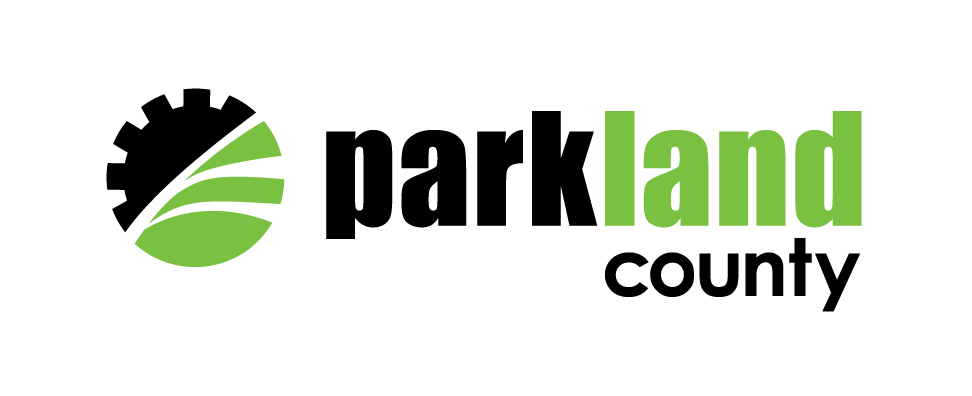Pollinators of Parkland County
Alberta’s native pollinators adapted alongside regional plants; together they are foundational to the function of ecosystems throughout the province. Although many people associate pollination with bees and butterflies, many other animals are also important pollinators.
Pollinators of Parkland County
Bees
Alberta is home to 375 native species of bees. All of these feed on pollen and nectar and play a vital role in pollination. While this includes thirty species of bumblebees, which are social, most native bees are solitary and do not share nests. Some of the bees that can be found in Parkland County include:
- Bumble bees and digger bees
- Mining bees
- Plasterer bees
- Sweat bees
- Leafcutter bees
Bees are the most common pollinators in the Hymenoptera order, but wasps and ants can be pollinators too!

Butterflies
Parkland County is home to hundreds of species of butterfly and moth. Butterflies and moths belong to the order Lepidoptera ('scaly-winged'), referring to the tiny, overlapping and often colourful scales that cover the wings and bodies of adults. Many species drink nectar and contribute to pollination; others may eat little or nothing as adults.
Butterflies fly during the day and prefer open and sunny areas with colorful flowers, areas to bask (e.g. large stones or bare soil), and moist soil. Keep an eye out for:
- Swallowtails
- Skippers
- Brush-footed butterflies (e.g. crescents, comma, tortoiseshell, mourning cloak, fritillaries, and more)
- Gossamer-winged butterflies (e.g. silvery blue)
Although often overlooked, many moths are important pollinators. Moths are generally active at night (with exceptions) and attracted to flowers that are lightly colored and highly fragrant. Some moth pollinators in Parkland County include:
- Polyphemus moth
- Hummingbird clearwing
- Police car moth
Hoverflies
Hoverflies, also called flower flies, are being increasingly recognized as important pollinators of both wildflowers and crops. In addition, hoverflies provide ecosystem services not seen in bees, including controlling pests such as aphids, long-range pollen transfer, and recycling organic matter. Treed borders along agricultural fields can support hoverfly abundance and diversity, increasing these services.
Many species of hoverfly mimic the coloration of wasps and bees to avoid predation, but hoverflies themselves are harmless and unable to bite or sting. Hoverflies can be easily distinguished by their large, fly-like eyes, two wings (instead of four), and ability to hover mid-air.

Beetles
Several families of beetles are pollinators, foraging for pollen to eat and incidentally transferring pollen that gets stuck on them from flower to flower. They are often referred to as 'mess and soil' pollinators because they can damage or defecate in the flower. However, beetles are still important pollinators for many plant species. Beetle-pollinated plants tend to be large and strongly scented.
Beetle pollinators in Parkland County include:
- Checkered beetles
- Longhorn beetles
- Lady beetles
- Blister beetles
- Bee-mimic beetle

Hummingbirds
Hummingbirds play an important role in pollination, preferring flowers that are red and tubular. As hummingbirds feed on nectar, pollen sticks to their heads and beaks and may be transferred to the next flower or released into the air by their rapid wingbeats. Their strong memories allow hummingbirds to remember migration routes and return to the same yards and flowers previously visited. Hummingbirds in Parkland County include:
- Ruby-throated hummingbird
- Rufous hummingbird

How you can help
Some simple changes can make your land more attractive to pollinators:
- Retain native habitat such as grasslands, wetlands, and tree stands. Agricultural producers can add habitat around or within farm systems to increase pollinator abundance and diversity.
- Plant a diversity of native species to support a variety of pollinators. Adding areas of bare soil, wood chips, or bee boxes can provide additional habitat for pollinators.
- Minimize pesticide use. If possible, keep pesticide-free areas within your property.
- Contribute observations of native pollinators to iNaturalist.
Sources:
The Buzz About Native Pollinators — Oldman Watershed Council
Pollinator Gallery | Prairie Pollination
Selecting Plants for Pollinators 2017
Helping hoverflies help crops | Folio
Pollinators - Alberta Wilderness Association
Native pollinators want to be your buddies - Alberta Farmer Express
Contact Us
Parkland County Centre
53109A HWY 779, Parkland County, AB T7Z 1R1
General Office: 780-968-8888
Toll Free: 1-888-880-0858
After hours: 780-968-8400
Email: hello@parklandcounty.com




